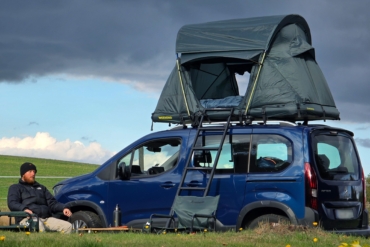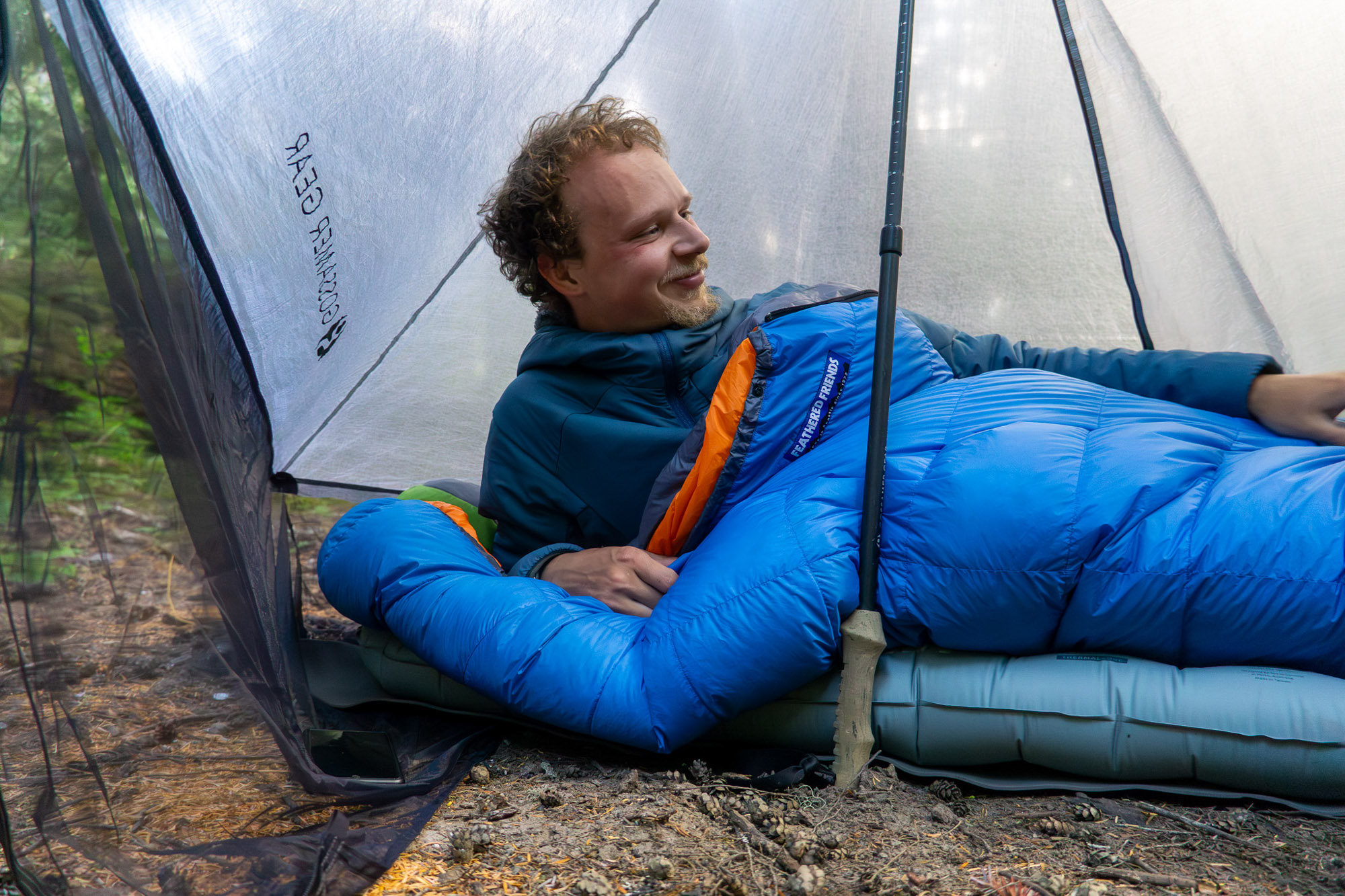I shaved 3 pounds off my backpacking kit with the Big Agnes Tiger Wall UL2 tent. The Tiger Wall maintains key features most people want while being one of the lightest two-person, two-vestibule tents on the market.
My wife and I have spent eight nights in the Tiger Wall. I’ve hiked over 110 total miles with it inside my pack. From the Needles District in Canyonlands National Park to the Teton Crest Trail in Grand Teton National Park, the tent has seen intense desert heat, high-elevation wind and rainstorms, and plenty of mosquitoes.
Thanks to its super-light weight inside a backpack and two-door/two-vestibule design, the Tiger Wall secured a top spot in my backpacking arsenal. If you’re in the market for a three-season backpacking tent, listen up.
Tiger Wall UL2 Specs
The Tiger Wall is almost laughably light. It’s hard to picture a 2-pound 3-ounce tent having the amenities that often constitute a comfortable backcountry home. However, this one has all the basics and then some. It has interior storage pockets, ample room when sitting up, and the durability needed for rough terrain and harsh weather.
Specs
- Weight: 2 pounds 3 ounces
- Floor area: 28 square feet (86 inches long, 52 inches at head, 42 inches at foot)
- Head height: 39 inches
- Vestibule area: 8 square feet
- Fly and floor fabrics: Silicone-treated nylon ripstop with 1,200mm waterproof polyurethane coating
- Tent body fabric: Breathable nylon ripstop and polyester mesh
- Various amenities: Dual zipper doors, Quick Stash doorkeeper, two interior mesh pockets, media pockets above sleeping area, interior loops for attaching accessories, pre-cut guylines, and tensioners attached to fly
- Fast Fly setup: For an ultralight, 1-pound 11-ounce Fast Fly mode, you can use only the fly, poles, stakes, and footprint (sold separately) to create a minimalist shelter
- Price: $399.95
Tiger Wall UL2 Review
Setup of the tent is mostly intuitive, with color-coded pole ends that correspond to the tent and rainfly corners. To increase the durability and longevity of the tent’s floor, I purchased the separate $70 tent footprint, which weighs in at 6 ounces.
It’s worth noting that the tent poles don’t stretch out the four tent corners, as is often the case. At the wider end, for your head and shoulders, the tent poles fork from a central point at the tent’s highest point and come down to stretch out the two corners.
At the narrower end, though, only one pole comes down the middle, leaving the two bottom corners loose and flappy. To combat this, you simply stake out the two corners to pull them taut.
That setup seemed odd to us, and we assume it was a decision that ultimately saved weight. When setting up camp on stake-able ground, the bottom tent corners stretch out nicely and ultimately go unnoticed.
However, you can’t properly set up and stretch out the tent on rocky or rooty land where stakes can’t penetrate. In Canyonlands National Park, for example, we had to move the tent around to find a spot devoid of slick rock where we could properly stake out its bottom corners.
Without the rainfly, the tent is a wonderful mesh abode. When the weather was nice, we’d forego the fly and watch the stars through the mesh canopy. At a particularly buggy site in Yellowstone National Park, we crawled into the tent early and enjoyed a sunset view from within its walls.
And the tent has ample seating and headroom, enough to comfortably play cards. It’s wide and long enough for our Big Agnes double sleeping pad (40 x 72 inches). The two doors are a godsend, allowing us to enter and exit without having to crawl over each other.
2 Doors, 2 Vestibules
The two-vestibule rainfly stakes out nicely, directing moisture away from the tent and staying put amidst wind gusts. In Grand Teton National Park during a rainstorm, we fit both of our backpacks easily underneath one vestibule. We used the other door as a backpack-free entry/exit.
The rainfly doesn’t touch the tent at any point, so during the rainstorm, the tent body stayed perfectly dry on every side. It’s also nice that the rainfly is silver — the tent doesn’t feel like a dark dungeon when it’s on.
Each vestibule has a zipper down the middle and two loops on either side at the end, allowing each flap to be staked individually. This makes it easy to unzip the vestibule, unloop one flap from its stake, and easily exit while the other flap stays taut to protect your gear.
As for durability, the almost precariously thin tent floor, walls, and mesh have yet to scratch or tear. Despite how fragile they seem, the materials have held up to various abrasions and constant cramming into a full backpack. Still, it’s not a tent to be haphazardly tossed and dragged around.
After a good night’s rest, the tent packs up nicely. Everything easily fits into the provided bag, and the whole contraption slides effortlessly into a backpack, the weight hardly noticeable.
Downsides
Though not a huge deal, the corners of the tent must be staked out to be fully stretched taut. In a pinch, if there’s no stake-able ground nearby, two air mattresses (or one double air mattress) would likely flair out the bottom corners enough to be comfortable. Otherwise, expect to use the stakes to ensure a properly taut tent.
With how meshy the tent body is, wind easily picks up dirt and sand and deposits it inside. In Canyonlands, we came back to a very sandy tent and sleeping bag after a day of hiking, as we had neglected to put the rainfly on.
As for the rainfly and its two vestibules, we’ve had a hard time staking them down low enough to keep the wind from blowing dirt underneath and into the tent. The rainfly attaches to each of the tent corners but doesn’t get pulled all the way to the ground. Even with the vestibules staked out low, wind still carried sand underneath and through the mesh tent.
Though freakishly lightweight, its durability, comfort, and practicality prove that Big Agnes cut no corners in making its Tiger Wall UL2 tent. It’s an engineering feat that should make backpackers rejoice.















